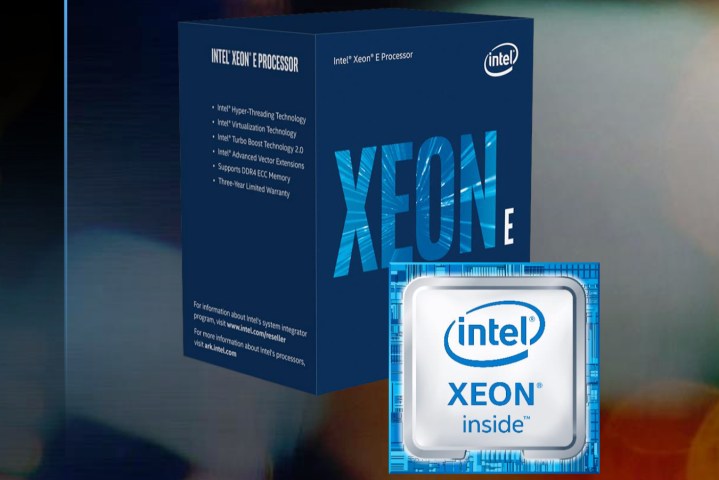
Intel is now offering 10 new processors under the Xeon E-2100 Series brand targeting entry-level workstations. The new CPUs are an ideal upgrade for companies that haven’t refreshed their workstation hardware in three to five years, providing the latest processor technologies through Intel’s latest eighth-generation “Coffee Lake” design.
Here they are:

As the chart shows, the new entry-level Xeon E-2100 Series packs up to six cores and 12 threads while only consuming up to 95 watts of power. All chips labeled with the “G” suffix include an Intel UHD Graphics 630 integrated GPU component while the non-G chips ship without graphics. All 10 support 40 PCI Express 3.0 lanes through the CPU (16) and motherboard chipset (24) combined.
The big news here is that Intel’s is updating the entry-level workstation market with six-core solutions. These chips also bring to the table support for Intel’s Optane memory, Thunderbolt 3 connectivity, USB 3.1 Gen2 connectivity (10Gbps), gigabit Intel Ethernet, Intel Wireless AC, and up to 64GB of DDR4 ECC system memory clocked at 2,666MHz.
“The combination of two additional cores and higher single-core turbo frequency delivers increases in performance across workstation benchmarks as compared with previous four-core entry workstation processors,” Intel says. “The processor offers Error Correcting Code (ECC) memory, a key feature to maximize data integrity, to help improve system stability and to reduce the possibility of silent data corruption.”
According to the company, the performance of the new Xeon E-2100 Series chips is up to 1.36 times faster than 2017’s Xeon E3-1200 v6 processor family. Compared to the 2017 chips, you’ll supposedly see up to 1.45 times faster financial services applications, up to 1.36 times faster compute-intensive applications, and up to 1.45 times faster 3D modeling and animation applications.
For example, the Xeon E3-1275 v6 processor released in 2017 can decode, stitch, render, and encode 4K video in six minutes and eight seconds. Meanwhile, the new six-core E-2176G can perform the same task in four minutes and 39 seconds, shaving off one minute and 29 seconds. The chips also provide more than enough horsepower to create and experience virtual reality applications using the HTC Vive and Oculus Rift.
The new entry-level processors follow the company’s Xeon W processor family for mainstream workstations. Intel provides eight CPUs in this group such as the 18-core W-2195 processor with a base speed of 2.3GHz, a maximum speed of 4.3GHz, 24.75MB of cache, and a 140-watt power requirement. The other chips in this family range from 14 cores to a mere four cores.
But if your wallet can support extreme performance, Intel’s Xeon Scalable Processor family is your ticket to the ultimate workstation. The top-of-the-line chip is Intel’s Platinum 8180 sporting 28 cores and 56 threads with a base speed of 2.5GHz, a maximum speed of 3.8GHz, and a 205-watt power requirement. The remaining nine Platinum and Gold processors range from 24 cores to a mere four cores.
Intel didn’t say when you can purchase the new entry-level Xeon E-2100 Series chips to build your own workstation. Instead, expect to see the CPUs in pre-built workstations from Dell, HP, Lenovo and other manufacturers.


